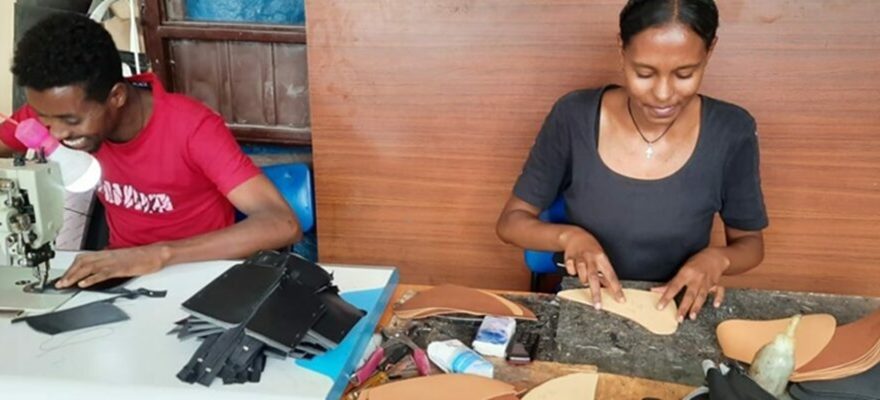
It is common knowledge that proper and efficient utilization of both human and material resources is crucial to betterment the lives of individual citizens and ensure development nationally. For this reason, countries are working to capacitate their respective citizens with essential knowledge and skills and utilize their resources efficiently.
In this regard, Technical and Vocational Education and Training (TVET) is gaining popularity as one way to produce competent and competitive workforces that could play a constructive role in supporting the economy.
Relevant documents also confirm that TVET is instrumental in catalyzing development by feeding the industry with skilled workforces. Owing to this, several countries, mainly developing countries, are increasingly investing hugely on TVET as a means to create jobs for their respective citizens and realize substantial economic growth.
What is more, by creating avenues for training opportunities and career advancement for an increased number of school leavers; it helps in provision of skilled manpower for the young people needed at different levels of the economy.
Nowadays, many academicians are urging countries to inculcate TVET education as an integral part of the general education because it is a viable means for preparing the youth for occupational fields and make them competitors in today’s global job market.
Furthermore, it is an aspect of lifelong learning and a preparation for responsible citizenship. It is also an instrument for promoting environmentally sound sustainable development; and a mechanism to alleviate poverty.
Being mindful of this fact, The Ethiopian Herald approached Entoto Polytechnic College Dean Teshome Feyisa to have his insights regarding the role of TVET in creating jobs, nurturing the spirit of entrepreneurship and nation building.
According to him, Ethiopia is taking significant steps in developing its TVET ecosystem with the aim to support its priority growth sectors, which include agriculture, mining, Information Communication Technology (ICT), tourism, with an emphasis on manufacturing and mechanized industrialization. “TVET provides students with the level of competence in practical skills and sound scientific knowledge required for skilled manpower.”
The College is providing 11 programs such as leather and textile, aesthetics as well as metallurgy with high focus to quality.
“In my view, it is an ideal time to further strengthen TVET because the country is committed to promoting it. Ethiopia’s TVET strategy aims to increase access, relevance, and quality of TVET programs, focusing on expanding TVET programs to underserved areas, improving the quality of training, and strengthening the link between TVET and the labor market. To this end, the strategy focuses on enhancing the capacity of TVET institutions to offer demand-driven training and certification programs.”
This is mainly a result of rapid labor force growth coupled with a number of other challenges. To undo the challenge it is important to provide the youth with short term TVET training and provide them with the necessary skills and tools to operate.
Moreover the misconception towards TVET should be tuned to the right direction through putting working approaches and productive advocacy.
Entoto Polytechnic College could be one living example for low under intake though it could usher seven thousands trainees it is providing training only for over three thousands of regular.
Skilled workforce with the right competence is in high demand among the industries; this demand should be addressed through the collaboration of the industry and the TVET colleges. “In this regard we do have productive linkage that helped us to devise our program.”
Electrical and Computer Engineering at Top Water Ethiopia, Abel Wondafrash for his part said that it is evident that the ever growing number of youth coupled with the greater number of new entrants to the labor market are imposing heavy social and economic burden on the country he said adding that unemployment and underem¬ployment is one of the main socio-economic development concern not only in Ethiopia but also in number countries, including developed ones.
“In my view, without providing job-related skills, youth and adults cannot benefit from the employment oppor¬tunities that offer a better in-come. The best cure is letting the youth acquire professional skills through TVET. The industry demands workforces with high competence and skills that could discharge their duties and responsibilities with dexterities in productive fashion, no matter what.”
According to him, respective TVET colleges should assess the market demand for labor in the industry and at the same time industries should show courage to approach TVETs to undo the problem. This approach is helpful to inculcate the spirit of entrepreneurship and allow the young people to be job creators for themselves, make bread, and earn their own income, which means they are engaged in easing the burden.
He also pointed out that the miscalculation of families and students towards TVET should be corrected. There are a bunch of citizens who are not well informed about TVET. “I think a sustainable advocacy program should be put in place,” he opined.
He also recommended that TVET colleges should provide training that could hone the skills of the youth. “I come across TVET colleges which are obsessed with providing theoretical knowledge rather than practical training; this could hamper a nation’s effort to produce a skilled workforce. It should be corrected through productive inspection.”
The benefit of TVET in supporting the economy is wide ranging. Thus, the private and the public along with the community and industries should come together and come up with a working system that could meet the demand for skilled workforces and undo the challenges.
As to the document published by the African Center for Economic Transformation, citing the study by the UN Department of Economic and Social Affairs, 2019, Ethiopia’s population is growing fast at 3.02 percent per year and is estimated to exceed 144 million in 2030.
The fast growth of the working age population with limited employment opportunities is growing fast at 3.02 percent per year and estimated to exceed 144 million in 2030. Moreover, the labor force is growing much more than the population as a whole because of the young dominated demography profile. An estimated 45 percent of the population is under age 15 and 71 percent under age 30 in the previous years.
In addition, each year about two million new graduates are added to the labor force. This gives another push to swelling unemployment. We are witnessing high and rising unemployment rates concentrated in urban areas19.1 percent out of which 20 percent are graduates and 25.3 percent in 2o18 and high levels of vulnerable employment about 86.5 percent in 2017.
This fast growth of a youthful working-age population, as to the study, could be a great asset for socio-economic development if it is properly handled and managed.
BY MENGISTEAB TESHOME
The Ethiopian Herald May 12/2024





